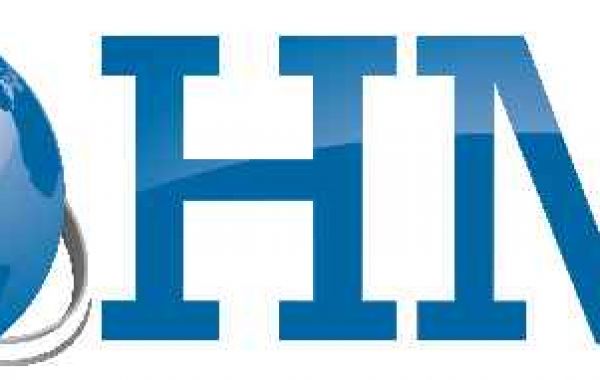Demand for medical coding companies has surged in recent months. COVID-19 has revealed medical coding inefficiencies, and firms are struggling to keep up.
Good medical coding companies work with healthcare organizations to solve inefficiencies and reduce errors. Effective medical coding tips helps a company avoid wastage, capture lost revenue, and reduce patient conflicts.
Your healthcare organization might have effective medical coding systems in place. Unfortunately, a pandemic like COVID-19 can reveal problems with any organization’s medical coding.
The CDC, CMS, and AMA have all released COVID-19 coding guidelines in recent weeks. We’ll summarize that information below to help your organization manage the COVID-19 pandemic.
What Providers Need to Know About COVID-19 Medical Coding Billing Tips
COVID-19 has put strain on healthcare providers across the United States. Effective coding and billing helps organizations manage the infectious disease and avoid becoming overwhelmed.
The healthcare industry is adapting to COVID-19 and creating new codes for the novel coronavirus. The pandemic is bringing in new patients with unique needs, creating more coding and documentation challenges for organizations.
Below, we’ll summarize some of the guidance released by the CDC, CMS, and AMA in weeks for medical coding during COVID-19.
CDC Guidance on ICD-10-CM for Positive COVID-19 Test Results
The Centers for Disease Control released new medical coding guidance in March for COVID-19. The CDC added the new International Classification of Diseases, Tenth Revision, Clinical Modification (ICD-10-CM) emergency code from the World Health Organization.
Based on that guidance, the code for the diagnosis of COVID-19 is U07.1, 2019-nCoV acute respiratory disease.
The CDC expected to implement that code in October 2020, but they moved the implementation date to April 1 after the rapid spread of the disease.
The CDC recommends only using U07.1 to document a confirmed COVID-19 case based on a confirmed test result or a presumptive positive test result. This code also applies to asymptomatic patients who test positive for coronavirus.
U07.1.1 is a principle or first-listed diagnosis code. That means providers should sequence the code first, then use appropriate codes for associated manifestations of the illness, unless dealing with obstetric patients.
The CDC does not recommend using the U07.1 code to diagnose suspected, possible, probable, or inconclusive cases of COVID-19. Providers should only use this code for confirmed (or presumptively confirmed) test results.
Coding for Exposure to COVID-19
The CDC recommends using code Z03.818 for exposure to COVID-19. This code covers encounter for observation for suspected exposure to other biological agents ruled out and screening, according to CDC regulations.
HCPCS Codes for Diagnosing Patients and Stopping Spread
CMS created Healthcare Common Procedure Coding System (HCPCS) codes to help providers get reimbursed for diagnosing patients and stopping the spread of COVID-19.
CMS recently announced two new codes, including U0001 and U0002, which cover COVID-19 tests:
• U0001: This code is used to document and bill for tests performed at CDC laboratories.
• U0002: This code is used to document and bill for tests performed at non-CDC laboratories, including clinical laboratories outside of the CDC.
Medicare has accepted these codes since April 1, 2020, although any codes will be retroactive to February 4 to account for any tests performed since that date. Providers can expect to receive approximately $35 for U0001 coded claims and $51 for U0002 coded claims through Medicare.
American Medical Association Reveals COVID-19 Coding Guidance
On May 20, AMA released new coding and guidance for the Medical Coding Tips COVID-19 coronavirus.
AMA’s new Current Procedural Terminology (CPT) codes were created to streamline the novel coronavirus testing available across the United States.
Key points from the AMA’s CPT codes include:
• The AMA accepted the addition of code 87635 to report infectious agent detection by nucleic acid (DNA or RNA) for COVID-19 by amplified probe technique. The code is effective from March 13 onward.
• The AMA accepted the revision of code 86318 to report immunoassay for infectious agent antibodies and to be a parent to 86328.
• The AMA accepted the addition of code 86328 to report single step antibody testing for COVID-19. They also accepted the addition of child code 86769 to report multiple-step antibody testing for COVID-19. These new codes and revisions were effective from April 10 onward.
• The AMA accepted the addition of PLA code 020U to report the BioFire Respiratory Panel 2.1 (RP2.1) test, with the new code effective from May 20 onward.
You can view full details of the AMA’s expanded COVID-19 medical coding additions and revisions here.
Telehealth Coding for COVID-19
More healthcare providers are using telehealth for patient care. Telehealth can introduce new coding challenges beyond COVID-19.
HHS has relaxed certain rules during the COVID-19 pandemic, allowing providers to use telehealth while getting paid the same amount for patient care – even though care is provided virtually instead of on-site.
CMS has released a list of HCPCS codes to document telehealth services and other virtual patient visits. These codes will be covered under the Physician Fee Schedule throughout the COVID-19 pandemic.
AMA has released its own guidance on telehealth billing with CPT codes. The AMA’s guidance covers telehealth visits, online digital visits, remote patient monitoring, and similar telehealth services.
Other Medical Coding Tips COVID-19
COVID-19 medical coding can be complicated. By following these tips, you can minimize disruption and maximize patient care during the pandemic:
• Check the latest information from the CDC, CMS, AMA, and other official organizations frequently. The situation is changing constantly, and these organizations regularly release new coding guidelines.
• Assess documentation guidelines in EHRs to ensure providers are accurately documenting services.
• Take extra care to provide complete, precise, accurate documentation that reflects all related conditions during this pandemic. Researchers will use this data to assess this pandemic and the response, and high-quality data will be more valuable for preventing future pandemics.
Request Contract Medical Coding Services from HMI Corp Today
Struggling to keep up with medical coding during COVID-19? Your organization is not alone.
HMI Corp is one of America’s leading contract medical coding companies. We have decades of proven expertise solving medical coding issues across the United States.
Our contract medical coding specialists are all US-Based and have experience with TruCode, Meditech, VISTA, 3M, McKesson, Cerner, Epic, and CHCS/CHCSII.
All coding services are performed by AHIMA and/or AAPC credentialed medical coding professionals. Our professionals have firsthand expertise in Inpatient/MS-DRG, Outpatient Surgery, Physician E/M, Emergency Department E/M, Interventional Radiology, Ambulatory Surgery, GI/Endoscopy, and many other fields.
For help from one of the leading contract medical coding companies in the United States, contact HMI Corp today.








